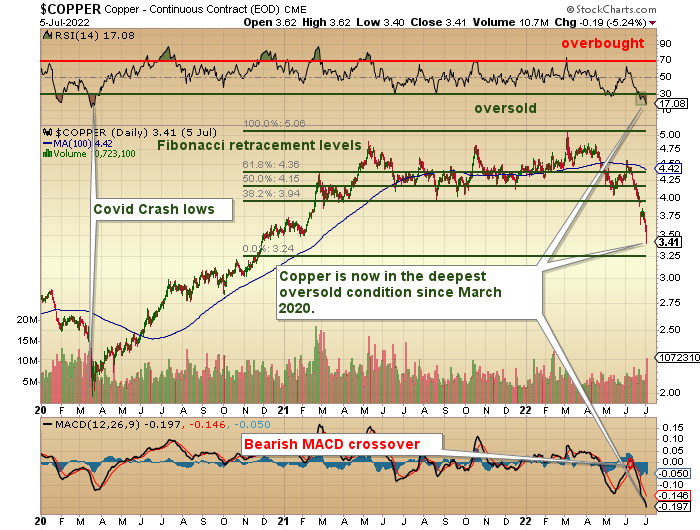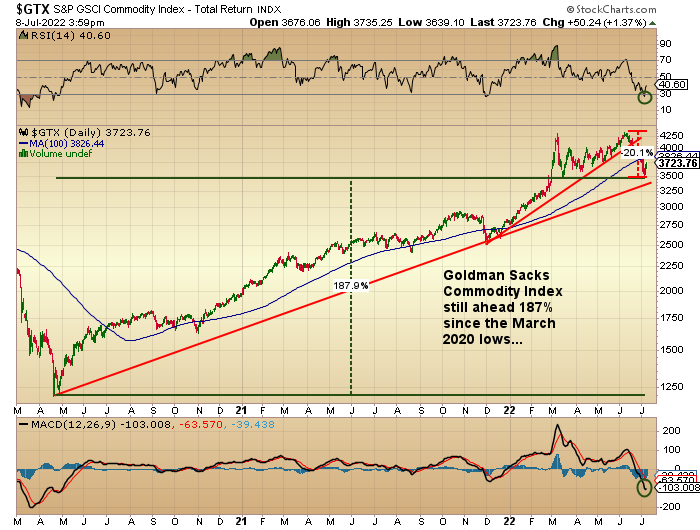Over the past forty-five years of carving up markets and writing newsletters, I have seen market commentators obsess over a number of different obstacles including geopolitical events (war, regime changes, coup d’états), hostile fiscal or monetary policies, climate (floods, tsunamis, earthquakes), accidents and assassinations (Challenger, Anwar Sadat) and a myriad of other market impactive circumstances that either disrupt or divert investment flows.
However, it was in early 2020 that one of John Naisbitt’s (Author of Megatrends: Ten New Directions Transforming Our Lives (1982)) predictions came true when the COVID-19 virus took the form of a “microbe” completing the trilogy of directions which included “the emergence of China” and “the microchip.”
“If banking institutions are protected by the taxpayer, and they are given free rein to speculate, I may not live long enough to see the crisis, but my soul is going to come back and haunt you.”
— Paul Volcker, Chairman, Federal Reserve 1979-1987
As I look back at how the pandemic unfolded, it resembled a slow-motion train wreck caught on tape as policymakers and their central bank hitmen reacted with utter incompetence verging upon criminality and negligence with each increasingly desperate decision moving the populace into deeper and deeper despair.
To wit, just when I thought that the political class had outdone themselves with their policy actions dealing with the pandemic, along comes Vladimir Putin seizing the opportunity to exercise control over the European economies by first invading Ukraine and then threatening to shut off gas transmission to economic powerhouses like Germany.
Now, that has happened a mere two years prior, it was not the event that caused the problem; it was the reaction to the sudden energy shock that threw the spanner into the gearbox.
The West, led by the Biden Administration, decided to attack the oil producers in an effort to get back at Russia so rather than promoting the increase of oil and gas production, they implemented sanctions that would instead impede production and with the inelasticity of the global energy market, a minor shift in supply created a massive amplitudinal increase in price. It was the macroeconomic equivalent of locking people in their homes in 2020 to prevent the spread of the virus despite humans having thousands of years of natural immunity defenses upon which to rely that could only have been put to work with human interaction.
Alas, the irony of the current dilemma lies in the fact that the solution can be found by looking at the imagined crisis of runaway precious metals prices back in 2011. Gold (and silver) demand was skyrocketing after the Great Financial Bailout of 2008 rescued the banks from self-immolation with a firehose of counterfeit cash. It was so bad that the Indian banks were being emptied of deposits in favor of gold purchases and as gold is seen as the kryptonite of the Indian banking industry, the banking fraternity decided to order a military-style takedown of the gold and silver markets which occurred in the wee hours of a New York Sunday morning in May where the battery of desk traders at the NY Fed carried out their instructions to crush metal prices, which included gold, silver, copper, platinum, and palladium over a 48-hour period constituting a 40% crash in silver and 20% plunge in gold. Prices would be on the defensive for another fifty-four months with gold finally bottoming at $1,045 and silver under $14 in late 2015.
How many times have you read that “only the physical market in gold and silver can prevent manipulation?”
Well, to that I say, “Hogwash!”
Between the Comex and the LME, futures are the tails that wag their physical dogs and the reason that works is that there is no enforcement of position limits and no enforcement of spoofing or manipulative practices.
In 2011, the big boys used the paper markets to crush gold just as they did to crush crypto in December 2017 after Bitcoin touched $19,000 the very first night that the futures contract began to trade as a paper market contract. They could not stop BTC until that contract was created and then a magical illusory supply of it suddenly showed up and down it went.
So, rather than trying to cap Russian oil prices or sanction anyone that buys Russian oil and gas, it would be far easier to engage the services of the most powerfully-skilled traders on the face of the planet—the bullion bank behemoths that never get margin calls, never need to prove ownership, and can lie, cheat, and steal their way in the establishment of lower prices for literally any commodity to which there is an assigned futures contract.
Taking the May 2011 example of the Sunday Night Massacre as a template, these “Terminator Traders” have the power and authority to take oil prices back down below $30/ bbl. which would severely impair the ability of Vlad the Impaler to fund his military campaign through energy sales. They could wait until the first Sunday in August, preferably at around 2:30 a.m. (30 minutes before London opens) when North American traders are asleep, tiptoe into the electronic access market, and then sell 30 million contracts representing an amount greater than the annual global production of oil, swamping any and all bids and creating a flood of margin selling followed by the ensuing panic when U.S. markets open the following morning.
“Can’t happen” you say?
It actually did happen back in 2011 when the volume of executed silver trades during the onslaught carried a notional amount of ounces exceeding the global annual silver supply from both production and scrap. J.P. Morgan has been convicted of securities infractions costing billions in fines for doing exactly what was just described and yet they still continue.
So I say to President Biden and Energy Secretary Jennifer Granholm “Go hire an army of coked-up bullion bank traders all dressed in combat fatigues and turn them loose of the NYMEX crude oil futures market with a bobblehead Vladimir Putin doll being first prize in the securities violation sweepstakes given to the trader that sells the most contracts with the greatest price drop. Those boys and girls at 33 Liberty St. in NY are absolute masters and just think of the political capital you would gain when gasoline prices crater.
As they say in the army “Never send a butcher to bake a cake” so since there is no politician on the planet that knows anything about price management, they would be wise to engage the true professionals of the intervention, interference, and manipulation trade that are none other than those executioners of retail net worth, the bullion bank traders!

I emailed this chart to all subscribers earlier this week showing a relative strength index at around 17 which placed it at the same level as it reached during the COVID Crash.
If this were not a period in which the Fed is openly and flagrantly hostile, copper would most certainly be in “Generational Buying Opportunity” mode but with the history of markets front and center, one trembles at the notion of growth slowing and rates rising so I am treating new positions in copper as short-term trades as opposed to long-term holds. Nothing has changed in the supply disruption narrative other than the certainty of higher prices when seen six months ago but the word “certainty” has since been removed and replaced with the word “likelihood.” Copper remains a strong buy but the risks are elevated due to the rapidly-slowing economic outlook. I like the copper miner ETF (COPX:US) under $30 down 36.5% since April.
We are in junior mining purgatory right now with anemic volumes and apathetic responses to positive news. Exploration success is starting to drive prices but compared to a few years ago, it is a challenging environment. I have concentrated my efforts on making sure that the companies I own are fully-funded but that is like saying that I am delighted to have paid my fire insurance premium as my house burns down.
As the late Richard Russell has written at least a hundred times “In bear markets, he who loses least, wins.” and there are no better times like these to blissfully recall the days when 10 feet of quarter-ounce gold would send the old Vancouver Stock Exchange into a frenzy. Gone are the days of drill-hole-created “area plays” where two dozen wannabe’s staked hundreds of acres of moose pasture in order to have some of the stock price magic grace the bid side of their markets.
Gone are the days of afternoon lunches at Hy’s where men in blue suits “selling dreams” hustled the moneyed crowd for grubstake capital. I might have thought that with all of the commodity price advances last year that the junior miners might have caught a serious bid but a lack of new discoveries and total disinterest where discoveries were made contributed to a lackluster junior market. In polling the mining brokers with whom I still converse, they tell me that business is worse today with commodities still ahead 187% from March 2020 than it was all through the pandemic. One look at the GSCI shown below and you come away with a feeling of astonishment at how bad the junior resource sector is given the relatively high prices versus thirty months ago.

Only time will tell whether my enthusiasm for copper, gold, and uranium is on-the-money but whenever sentiment for the juniors evokes general disgust and profane replies such as I get today, it has proven to be that elusive “Generational Buying Opportunity” which we got in the GDX:US in mid-March 2020 and oil at minus $37 per barrel in April of that year.
Originally trained during the inflationary 1970s, Michael Ballanger is a graduate of Saint Louis University where he earned a Bachelor of Science in finance and a Bachelor of Art in marketing before completing post-graduate work at the Wharton School of Finance. With more than 30 years of experience as a junior mining and exploration specialist, as well as a solid background in corporate finance, Ballanger's adherence to the concept of "Hard Assets" allows him to focus the practice on selecting opportunities in the global resource sector with emphasis on the precious metals exploration and development sector. Ballanger takes great pleasure in visiting mineral properties around the globe in the never-ending hunt for early-stage opportunities.
Want to be the first to know about interesting Oil & Gas - Exploration & Production investment ideas? Sign up to receive the FREE Streetwise Reports' newsletter.
Subscribe
Michael Ballanger Disclaimer
This letter makes no guarantee or warranty on the accuracy or completeness of the data provided. Nothing contained herein is intended or shall be deemed to be investment advice, implied or otherwise. This letter represents my views and replicates trades that I am making but nothing more than that. Always consult your registered advisor to assist you with your investments. I accept no liability for any loss arising from the use of the data contained on this letter. Options and junior mining stocks contain a high level of risk that may result in the loss of part or all invested capital and therefore are suitable for experienced and professional investors and traders only. One should be familiar with the risks involved in junior mining and options trading and we recommend consulting a financial adviser if you feel you do not understand the risks involved.
Disclosures
1) Statements and opinions expressed are the opinions of Michael Ballanger and not of Streetwise Reports or its officers. Michael Ballanger is wholly responsible for the validity of the statements. Streetwise Reports was not involved in any aspect of the article preparation. Michael Ballanger was not paid by Streetwise Reports LLC for this article. Streetwise Reports was not paid by the author to publish or syndicate this article.
2) This article does not constitute investment advice. Each reader is encouraged to consult with his or her individual financial professional and any action a reader takes as a result of the information presented here is his or her own responsibility. By opening this page, each reader accepts and agrees to Streetwise Reports' terms of use and full legal disclaimer. This article is not a solicitation for investment. Streetwise Reports does not render general or specific investment advice and the information on Streetwise Reports should not be considered a recommendation to buy or sell any security. Streetwise Reports does not endorse or recommend the business, products, services, or securities of any company mentioned on Streetwise Reports.
3) From time to time, Streetwise Reports LLC and its directors, officers, employees or members of their families, as well as persons interviewed for articles and interviews on the site, may have a long or short position in securities mentioned. Directors, officers, employees or members of their immediate families are prohibited from making purchases and/or sales of those securities in the open market or otherwise from the time of the decision to publish an article until three business days after the publication of the article. The foregoing prohibition does not apply to articles that in substance only restate previously published company releases.

















































